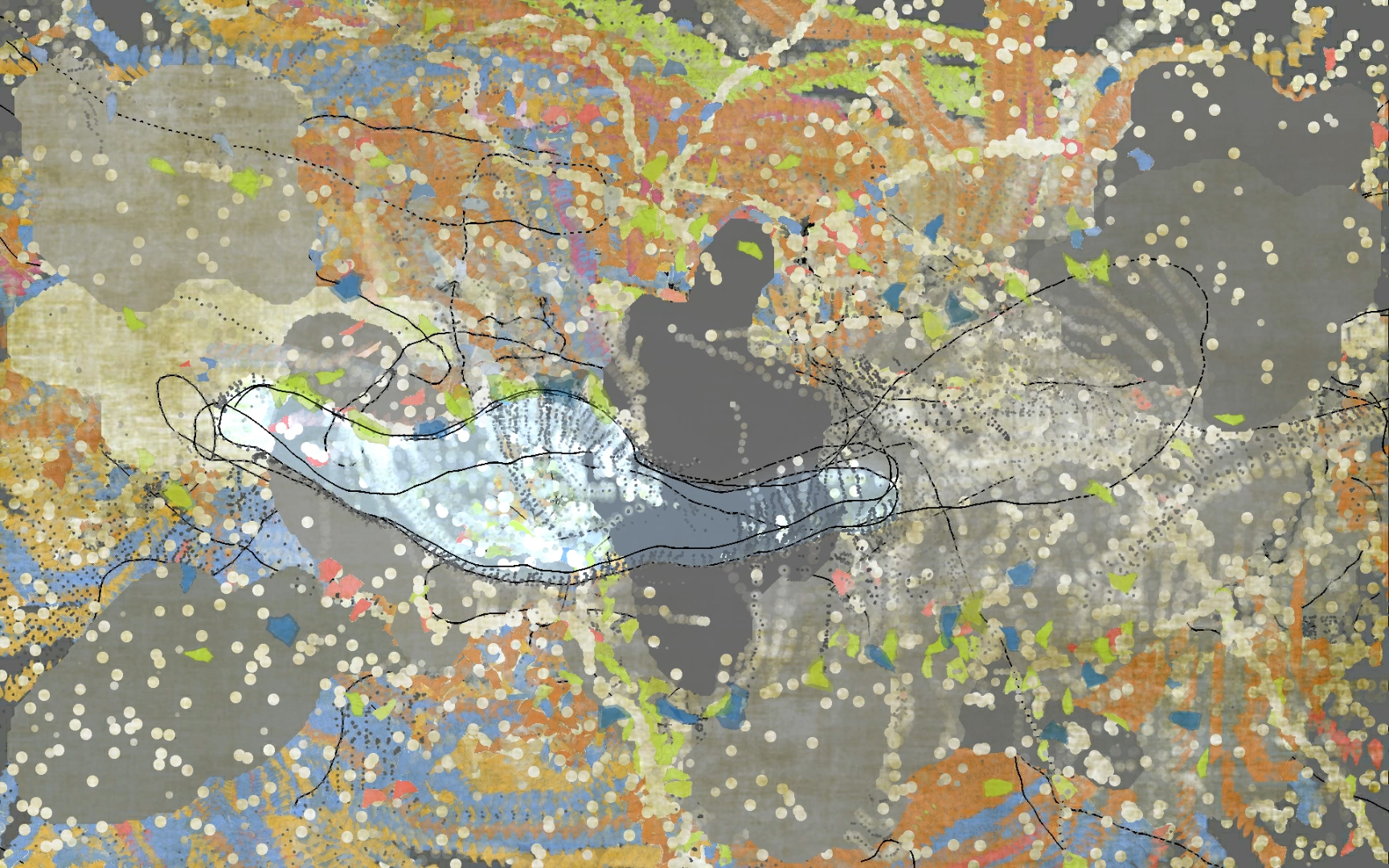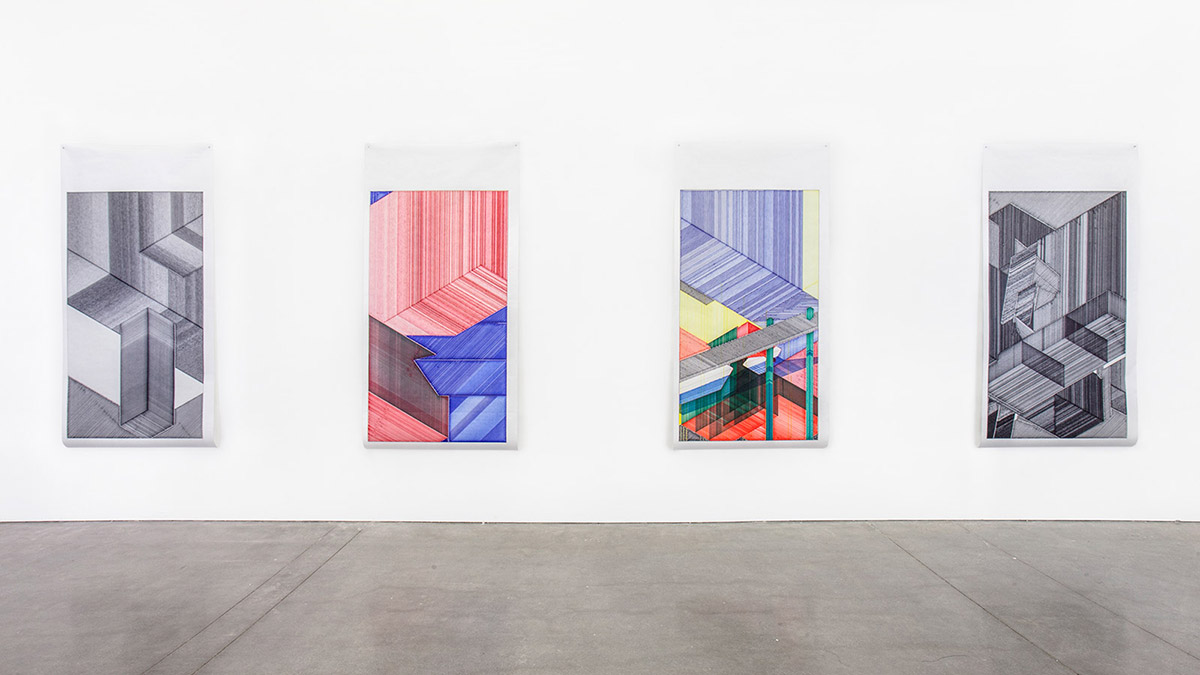Code as Creative Medium
Drawing & Painting
Precarious (2018)
Camille Utterback

Close-up view of Precarious, interactive digital drawing.
This artwork uses cameras to detect how people move. The program draws an outline around that human motion and connects it with other people’s outlines as a series of dots. These dots connect and dance with other people’s dots, creating a constantly changing picture.
Let’s Discuss
- How does the camera help the computer to “see” people move?
- What makes this artwork different from a regular painting?
Possible, Plausible, Potential (2015)
Made in Processing by Miguel Nóbrega

Installation view of Possible, Plausible, Potential, pen plotter drawing.
This artist wrote code that lets the computer make some creative choices on its own. He told the computer the basic rules (like “stay inside these lines”), but let it decide where to draw each line, making each piece more of a “conversation” between the artist and the computer.
Nóbrega understands his process as one of defining the boundaries in which experiments will take place. The outcomes of these experiments are sometimes unpredictable, which will most likely add up to the process in a feedback loop. The role of the artist ends up being to interpret the results and based on them to redefine the boundaries of the program.
- Filip Visnjic, Creative Applications
In other words, the artist sets the rules. The computer follows them, but its choices aren’t always predictable. That creates surprises the artist can respond to.
Let’s Discuss
- What parts of the art were controlled by the artist? What parts were random?
- In what way is the computer acting like a collaborator in the creative process?
Tip: p5.plotSvg is a tool that supports p5.js artists to download their sketches as SVG files, making it possible to connect p5.js with pen plotters.